A healthy recipe for buckwheat bread made with buckwheat flour and a mix of other gluten free flours. To make this buckwheat flour bread soft and pliable you’ll need yeast, egg and natural plant based thickeners. There is no kneading involved and the hydrated dough offer large air pockets in the crumb. Enjoy your buckwheat bread in a sandwich, toasted or save for later by freezing.

Buckwheat Bread Recipe
This buckwheat bread recipe is simple and customizable, the ingredients come together quickly in just one bowl. It requires about 25 minutes or less of “hands-on dough” the rest of the time is “hands off” time, in that the dough will be resting, raising and baking.
Just like my pumpernickel bread with buckwheat flour, this recipe for buckwheat bread uses a combination of gluten free flours, the difference is that is doesn’t need a sourdough starter. But if you’re fine with gluten, just use all purpose flour along with buckwheat flour. See more info below.
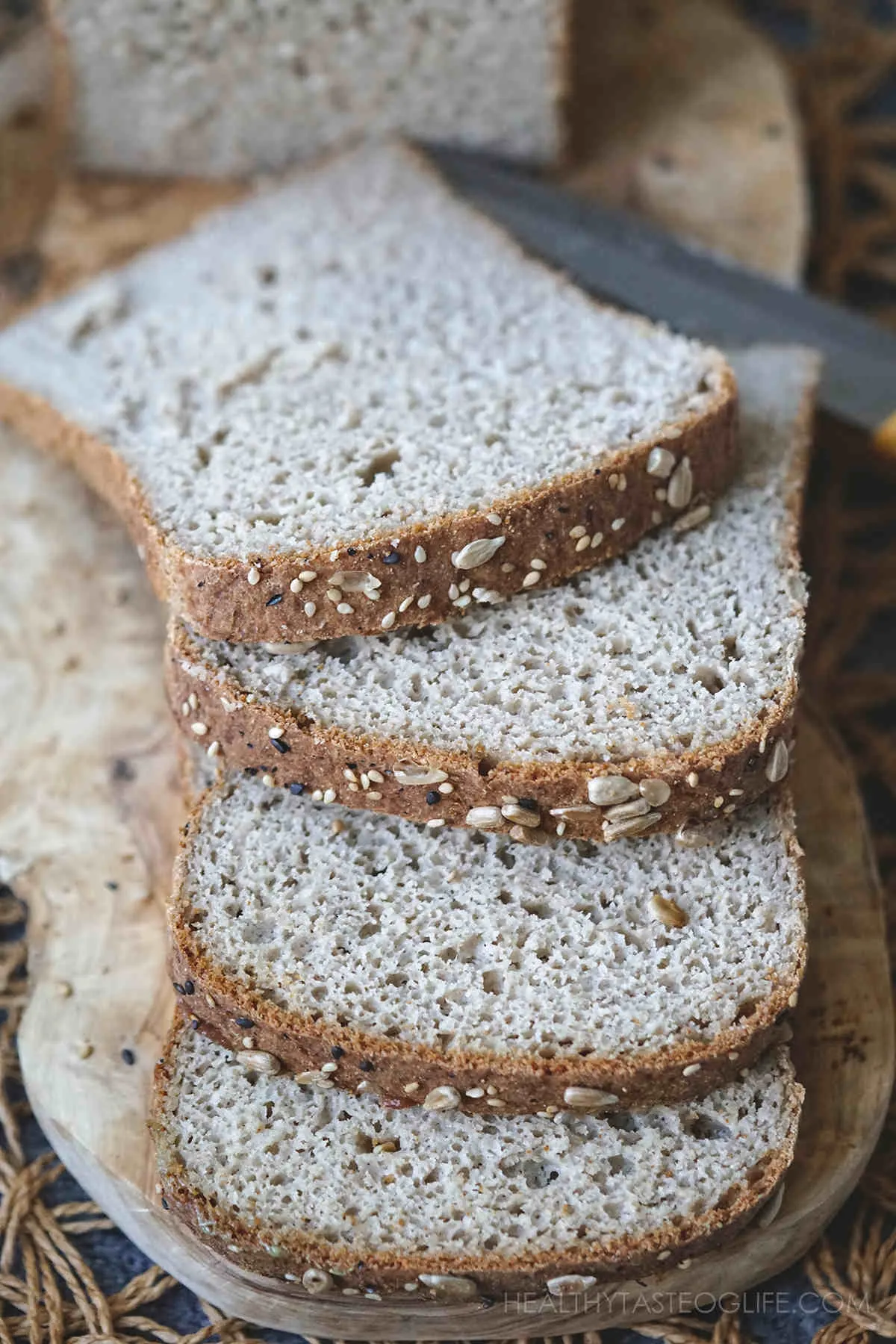
If you’re interested in making a buckwheat sourdough bread, you can use this gluten free sourdough starter recipe as a guide for making your own sourdough. You just need to replace the rice flour with buckwheat flour, and the rest of the process is basically the same.
I use sourdough in many gluten free bread recipes where I’m not using yeast, eggs or gums, like this white gluten free sandwich bread, this banana bread or these gluten free buns. And I even have a gluten free baguette recipe in my GF DF Cookbook.
Even though baking bread with buckwheat flour is not a common thing, I think buckwheat is actually quite appealing in all kinds of baked goods. The buckwheat crackers recipe which I posted a while ago proved to be one of reader’s favorite.
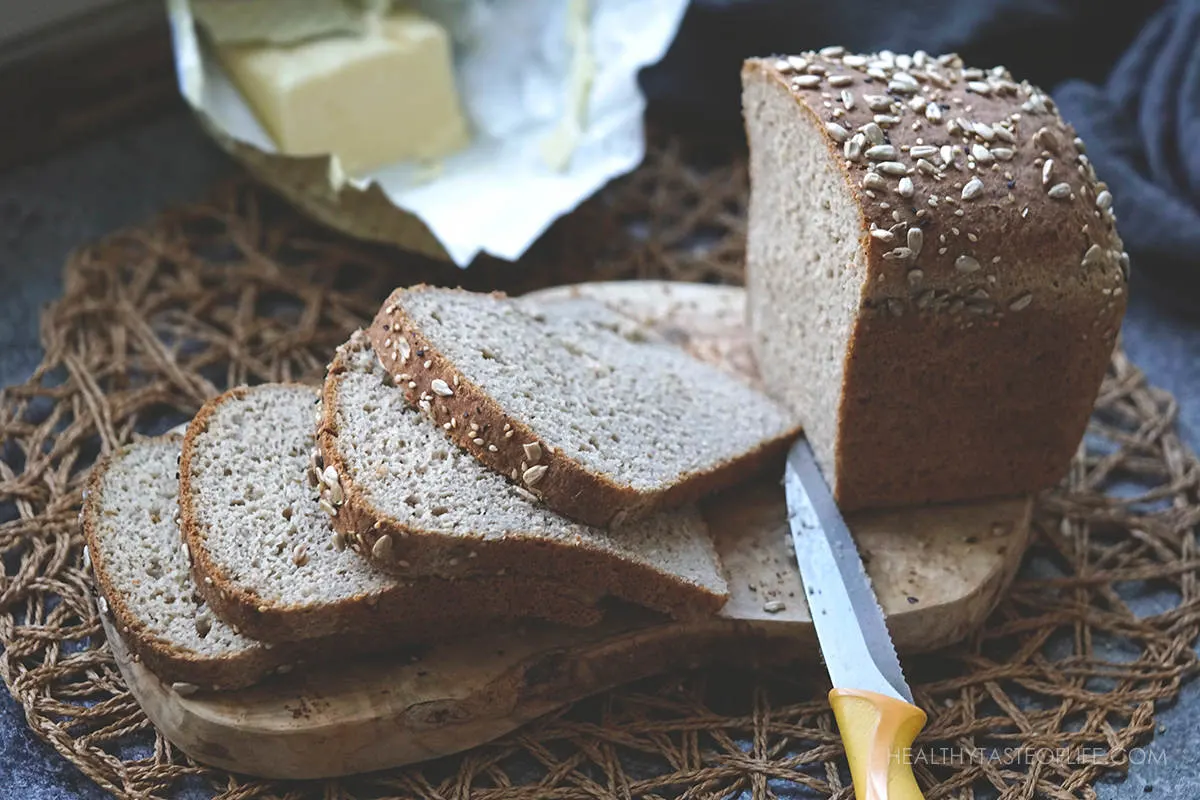
Buckwheat Bread Ingredients
For making this recipe for buckwheat bread you need the following:
- Buckwheat flour – buckwheat flour can be particularly tricky, it’s structure in baking breads can vary according to it’s quality. A finer and lighter flour will yield a fluffier buckwheat bread.
- Flour (wheat or gluten free) – replacing all of the flour in a recipe with (gluten-free) buckwheat flour is not going to work, the bread will not rise and will be hard and dry. That’s why I’m going to use a good proportion of other gluten free flours besides buckwheat flour. I’ll be using my gluten free flour mix, but you can use your favorite if you wish, including regular all-purpose flour (see notes below for that).
- Psyllium husk – is the crucial ingredient in gluten free bread baking. It acts as a binder, and it gives this buckwheat bread elasticity and pliability. Using the husk gives a better result than psyllium powder, so make sure to use that.
- Flax seeds – ground into flour like consistency. They will help with texture and reduce the gumminess.
- Fat – oil or melted butter will work, it has the role of softening the bread texture.
- Egg – the egg will help with the texture and structure. Beating the egg also helps with getting a softer fluffier texture.
- Sweetener – maple sugar or honey are great, but it’s totally up to you. I’m using this for activating the yeast.
- Acid – lemon juice or apple cider vinegar will work. This will help with the taste, and provide a little tang.
- Yeast – dry yeast is necessary for this type of gluten free buckwheat bread if you want a fluffy sponge like texture. I also tried the same recipe without yeast, only using baking powder or in combination with baking soda, it was a total fail. The bread didn’t rise much and had a very gummy texture. The taste was also not impressive.
- Water (warm, ideally at 105F degrees).
- Salt – will enhance the flavor.
Find the complete printable recipe with measurements below.
How To Make The Buckwheat Bread
First we’re going prepare the flour. In case you need to make the gluten free flour mix yourself, make sure you have it ready before starting. Also finely grind the flax seeds with a coffee grinder.
Step 1. Activate the yeast:
- In a 1/4 cup of warm water dissolve a 1/4 oz yeast packet (I used red star) and 1 teaspoon of sugar. I used maple sugar instead of white sugar.
- Let it activate (puff up) while you prepare the rest.
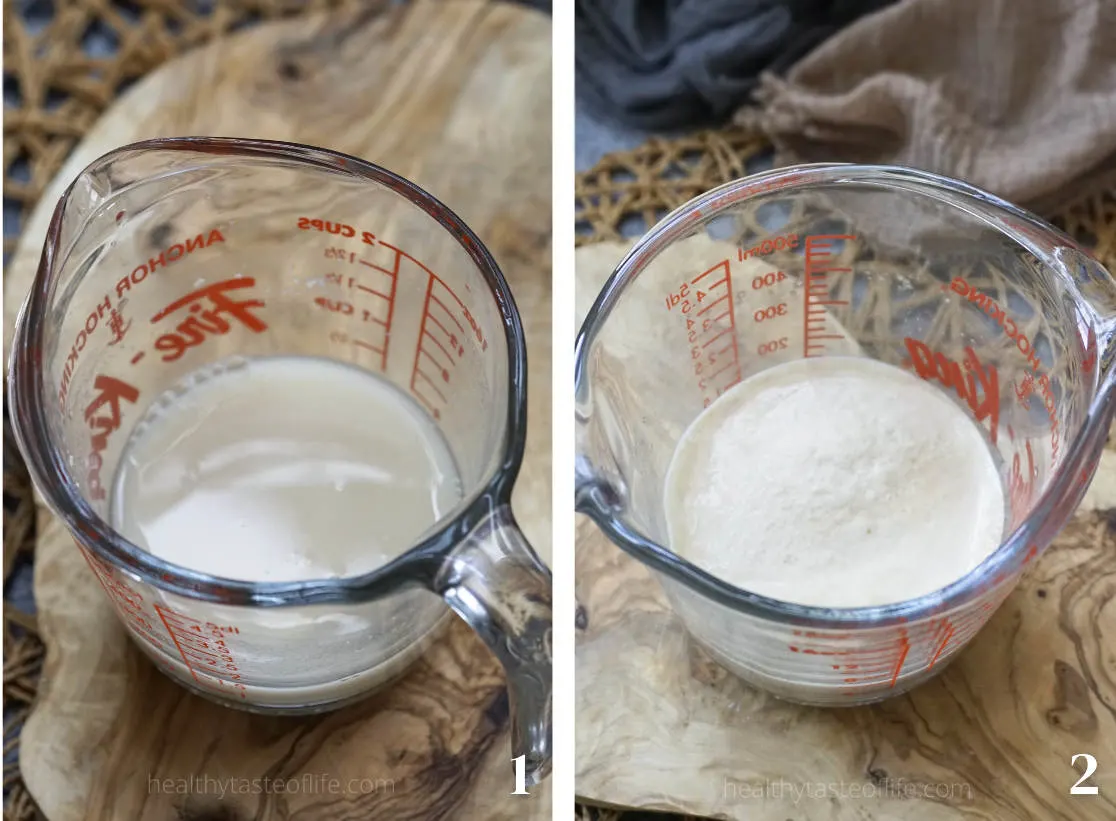
Step 2. Soak the psyllium husk and flax seeds in liquid:
- To start you need the psyllium husk and ground flax seeds to expand so they could provide the necessary binding properties.
- So, in the warm water (1 ¼ cup) add the psyllium and the ground flax seeds. Mix until homogenous. The mixture will transform into a loose gel very quickly.
- To that add the rest of liquid ingredients (the oil or melted butter, the apple cider vinegar, honey and the beaten egg), mix to combine. Set aside.

Step 3. Combine all the dry ingredients and mix everything together:
- Then add the flours and salt, gently mix until barely incorporated.
- Finely add the activated yeast and mix until well combined. You can use a silicon spatula for mixing. The dough should look slightly sticky and soft.

Step 4. Bake the buckwheat bread:
- Transfer the dough into a loaf pan. I used a non-stick 8 x 5 inch bread loaf tin with 4 Inch high walls and a 6.5 cup capacity from Jamie Oliver. If yours is not non-stick then line it with parchment paper.
- Smooth the top with your spatula and gently press to round the corners and sides.
- Sprinkle the surface of the loaf with seeds or crushed nuts if you like.
- Cover with plastic wrap or a towel and let it rise for 50 minutes or up to an hour.
- Bake the buckwheat bread at 350F for 50 minutes.
- Let the loaf cool for at least 10 minutes in the pan, before removing and cooling fully on a wire rack.
- Let it cool completely before slicing with a serrated bread knife.
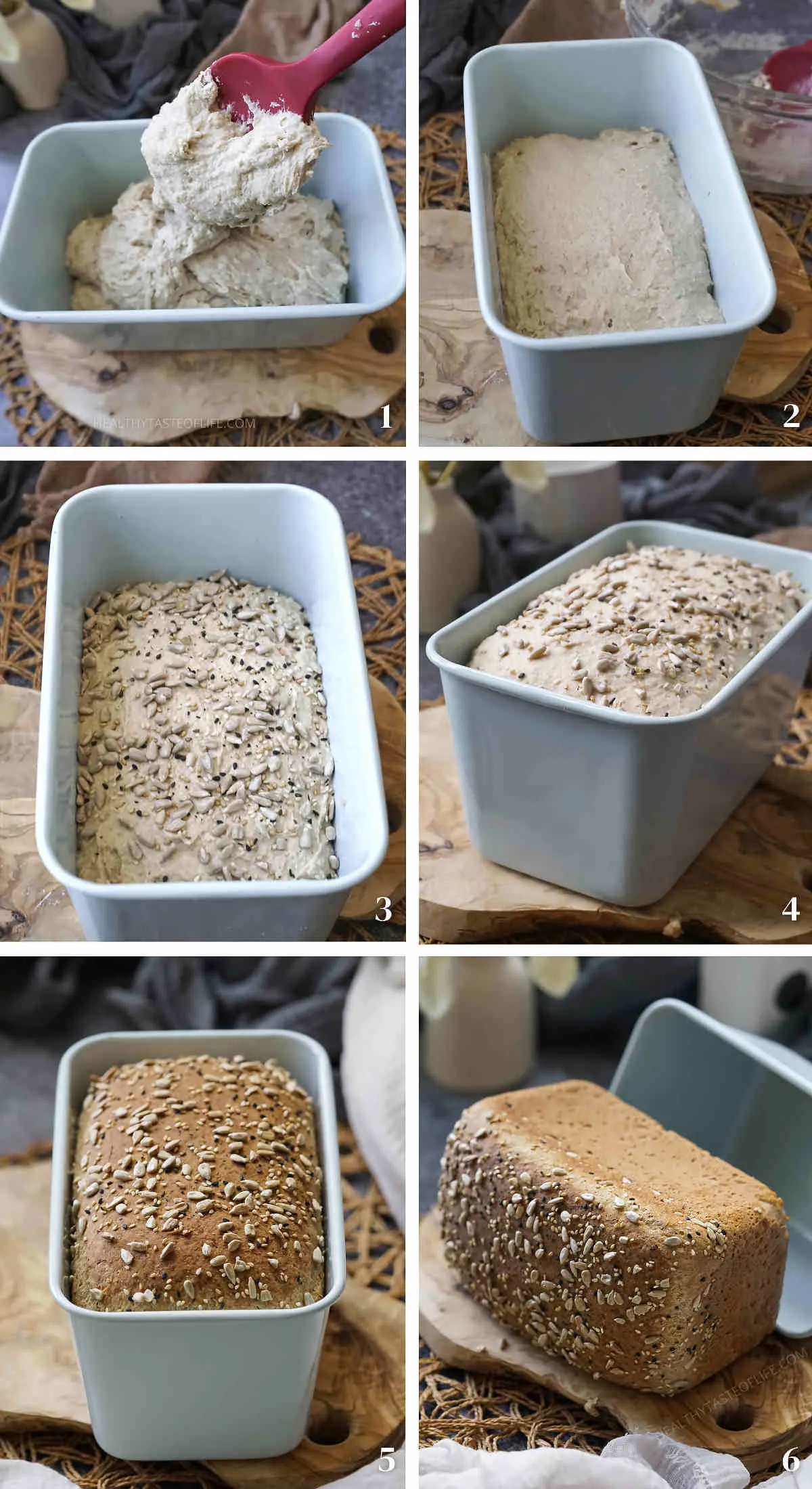
Related: Soft Gluten Free Wraps / Tortillas (Vegan)
How Does This Buckwheat Bread Taste?
The texture is moderately dense and flexible with a distinct golden brown crust. Toasting the bread results in a crisp, crunchy, filling slice. The taste of the bread is mild and similar to a whole wheat bread, because we combined multiple types of flours.
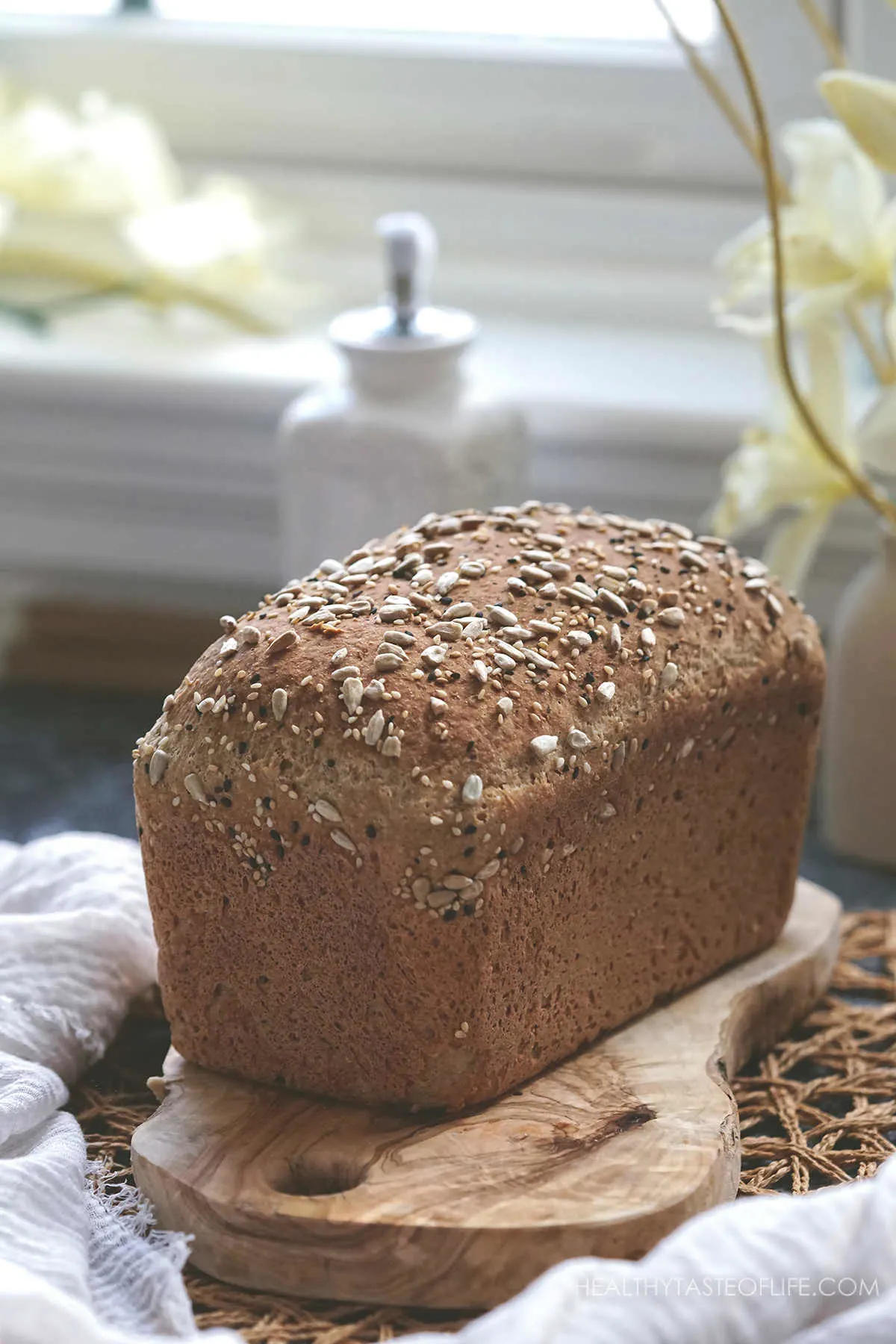
Buckwheat FAQs
When mixing buckwheat flour in bread it tends to yield a heavier texture, a darker toasted color and a more earthy taste.
Why does buckwheat take more time to rise than regular flours?
Since buckwheat flour doesn’t have gluten and has a heavier texture it need help and more time to rise (or bake). The solution is to combine with other flours and add a raising agent.
Buckwheat flour can be found in two forms: dark (made from unhulled buckwheat groats) or light (made from hulled buckwheat). The darker buckwheat flour has more fiber and flavor, while the lighter one has a finer texture and a lighter color.
Yes, buckwheat flour is naturally gluten free, unless it was processed in the same facility with other flours.
The buckwheat is mainly composed of carbs and have a well-balanced amino acid profile, a good amount of fiber, resistant starch, minerals, antioxidants and high-quality protein. And due to having a low to medium glycemic index, it’s considered safe to eat for most people with diabetes. But you should take into account the other ingredients used in a buckwheat bread before categorizing it as healthy. Added starches, gums and processed ingredients makes the bread less healthy.

Recipe Variations & Substitutions
- Make vegan buckwheat bread: if you omit the egg you need to replace that moisture with something similar in texture (something like apple sauce or vegan yogurt). Otherwise it might yield a crumbly texture.
- Other gluten free flours that might work along with buckwheat: a combination of sorghum flour and oat flour or a combination of arrowroot flour and teff flour (the color is darker than buckwheat). But you might need to adjust the water amount, some flour tend to absorb more moisture.
- Not Gluten Free? Use all purpose white flour: use it along with buckwheat flour as a substitute for the gluten free flour mix. As a result you can omit the psyllium husk and use less water.
- Add seeds or nuts in the dough: sunflower seeds, pumpkin seed, some buckwheat groats or ground almonds will also work.
- No yeast? Unfortunately, you need it. This type of bread doesn’t produce good results with baking powder and baking soda alone. I tried it!
- Add dried fruit in the dough: raisins, chopped prunes or cranberries.
- Ways to enjoy: dunked into vegetables soups or as healthy toast snacks.
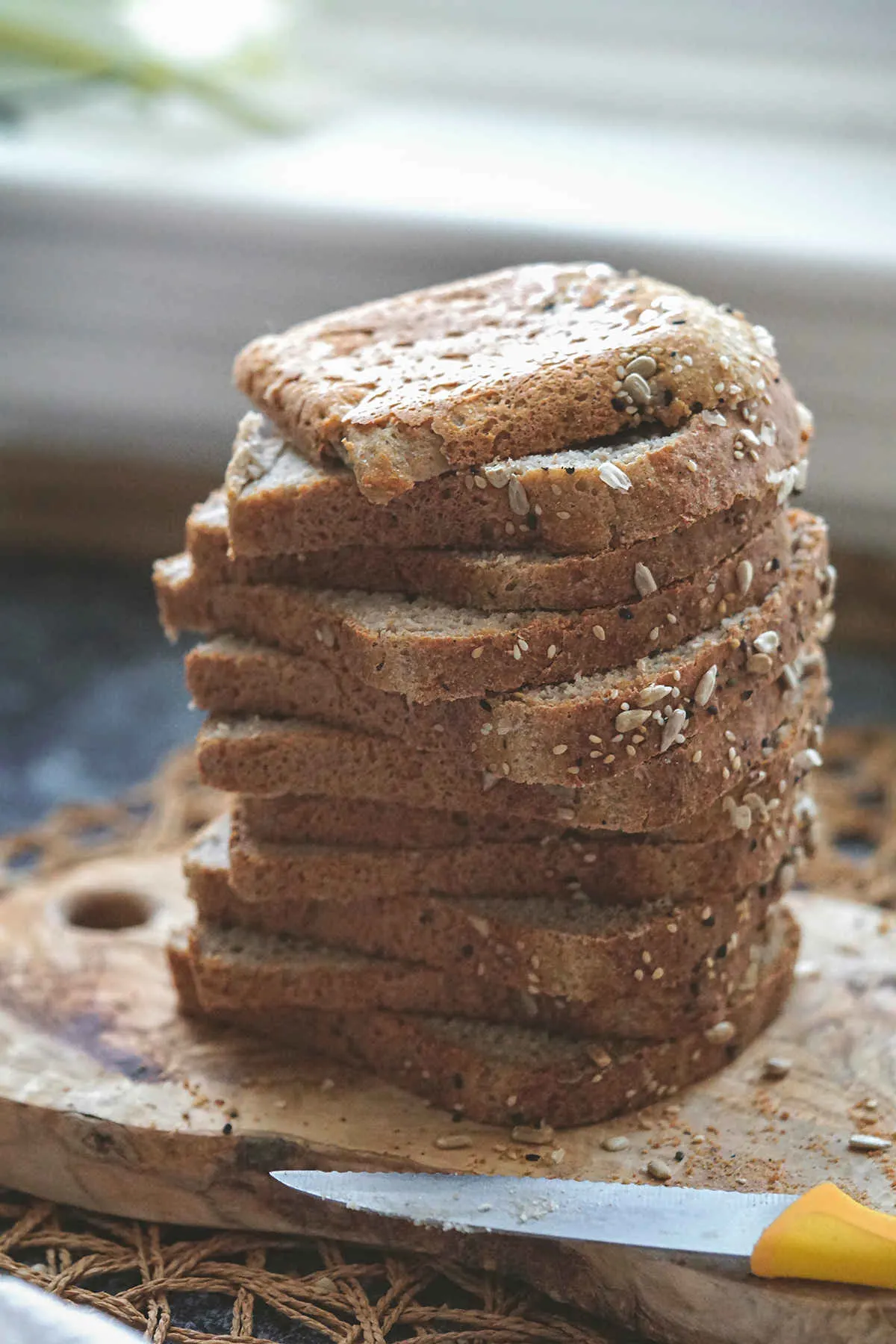
Storing Tips
- Storing leftovers: Store the buckwheat bread at room temperature for up to 5-6 days, in an airtight bag or container. I like to pre-slice after baking.
- Freezing: let the buckwheat loaf cool completely and then slice it. Place the slices in a sealed plastic bag and freeze for up to 3 months.
- Thawing: Place the frozen slices in a toaster and enjoy warm soft fresh buckwheat bread just like the fresh one.
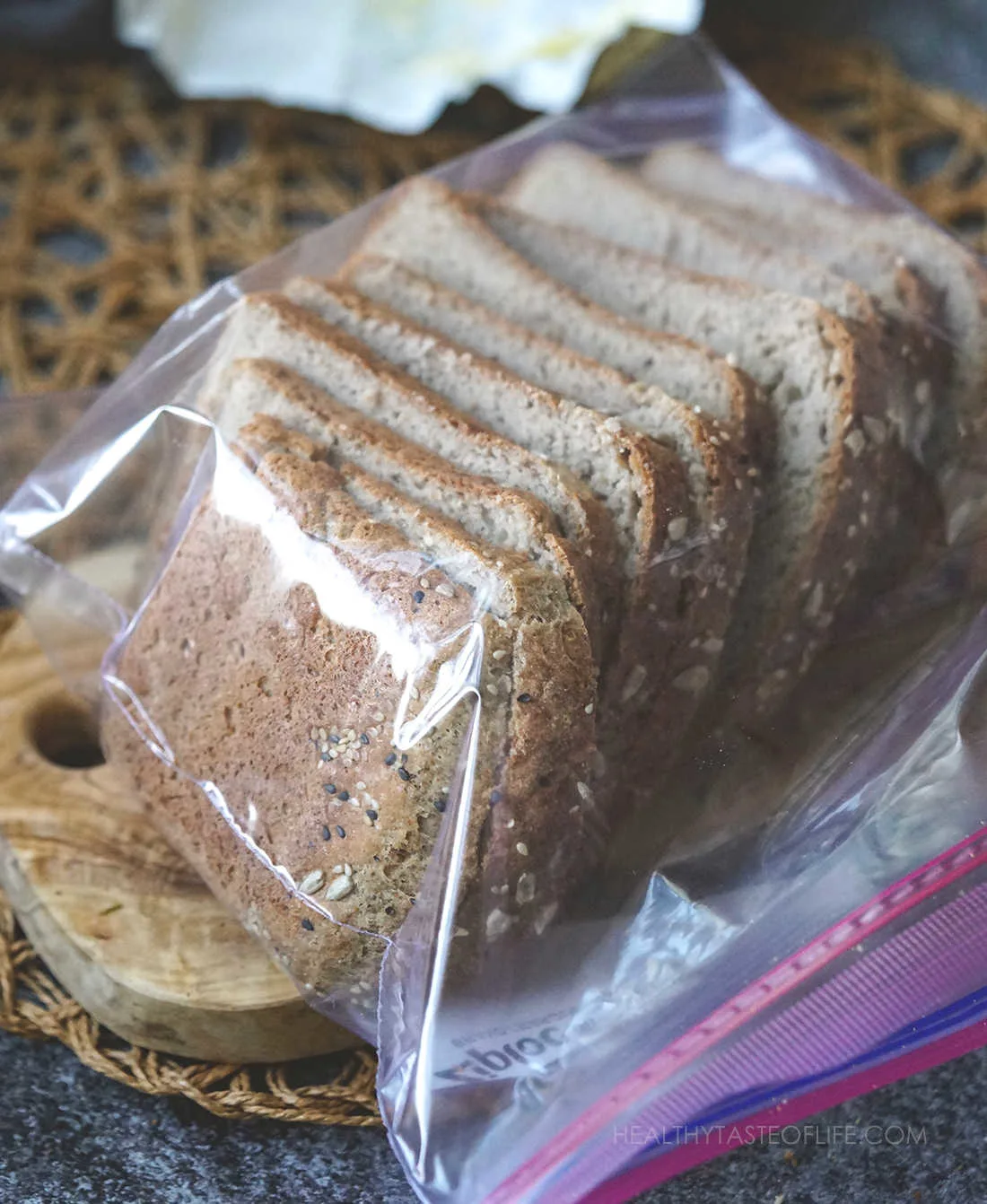
More Bread Recipes
More Recipes With Buckwheat or Buckwheat Flour
- Buckwheat Crackers | Crisps (GF, V)
- Stir Fried Buckwheat Soba Noodles (GF, V)
- Gluten Free Sourdough Pumpernickel Bread (GF, V)
- Snowflake Bundt Cake (GF, DF)
- Gluten Free Carob Cake – DF, Sugar Free
If you made this buckwheat flour bread recipe, then please leave a star rating or a comment below the recipe card.
Your feedback is really helpful for me and readers!
Soft Buckwheat Bread Recipe (GF/DF)
Ingredients
For Yeast Activation
- ¼ cup water - warm
- ¼ oz yeast - 1 packet
- 1 tsp sugar - I used maple sugar
Wet Ingredients and Thickeners
- 1¼ cup water - warm
- 3 tbsp psyllium husk - not powder
- 3 tbsp flax seeds - ground
- 1 large egg - beaten (omit if vegan)
- 3 tbsp fat - neutral oil, melted ghee or butter
- 1 tbsp apple cider vinegar - or lemon juice
- 1 tbsp honey - or maple syrup
Dry Ingredients
- 1 cup buckwheat flour - hulled (lighter color)
- 1 cup gluten free flour mix - I use my own, see notes
- 1 tsp sea salt
Instructions
Step 1. Activate the yeast:
- In a 1/4 cup of warm water dissolve a 1/4 oz yeast packet (I used red star) and 1 teaspoon of sugar. I used maple sugar instead of white sugar.
- Let it activate (puff up) while you prepare the rest.
Step 2. Soak the psyllium husk and flax seeds in liquid:
- To start you need the psyllium husk and ground flax seeds to expand so they could provide the necessary binding properties.
- So, in the warm water (1 ¼ cup) add the psyllium and the ground flax seeds. Mix until homogenous. The mixture will transform into a loose gel very quickly.
- To that add the rest of liquid ingredients (the oil or melted butter, the apple cider vinegar, honey and the beaten egg), mix to combine. Set aside.
Step 3. Combine all the dry ingredients and mix everything together:
- Then add the flours and salt, gently mix until barely incorporated.
- Finely add the activated yeast mixture and mix until well combined. You can use a silicon spatula for mixing. The dough should look slightly sticky and soft. Add more water if it feels/ looks too dry (see pictures).
Step 4. Bake the buckwheat bread:
- Transfer the dough into a loaf pan. I used a non-stick 8 x 5 inch bread loaf tin with 4 Inch high walls and a 6.5 cup capacity. If yours is not non-stick then line it with parchment paper.
- Smooth the top with your spatula and gently press to round the corners and sides.
- Sprinkle the surface of the loaf with seeds or crushed nuts if you like.
- Cover with plastic wrap or a towel and let it rise for up to an hour.
- Bake the buckwheat bread at 350F for 50 minutes.
- Let the loaf cool for at least 10 minutes in the pan, before removing and cooling fully on a wire rack.
- Let it cool completely before slicing with a serrated bread knife.
Notes
Buckwheat Bread Variations and Substitutions
- Make vegan buckwheat bread: if you omit the egg. But it might yield a more gummy texture. You might also need to adjust the amount of dry ingredients a bit.
- I’m using my own gluten free flour mix, if you use something different it may yield a different result, make sure to adjust the water amount if it feels too dry or too wet. I also used a finer and lighter buckwheat flour, make sure you use the same thing for best results.
- Other gluten free flours that might work along with buckwheat: a combination of sorghum flour and oat flour or a combination of arrowroot flour and teff flour (the color is darker than buckwheat).
- Not Gluten Free? Use all purpose white flour: use it along with buckwheat flour as a substitute for the gluten free flour mix. As a result you can omit the psyllium husk and use less water.
- Add seeds or nuts in the dough: sunflower seeds, pumpkin seed, some buckwheat groats or ground almonds will also work.
- No yeast? Unfortunately, you need it. This type of bread doesn’t produce good results with baking powder and baking soda alone. I tried it!
- Add dried fruit in the dough: raisins, chopped prunes or cranberries.
Nutrition
The information shown is an estimate provided by an online nutrition calculator.
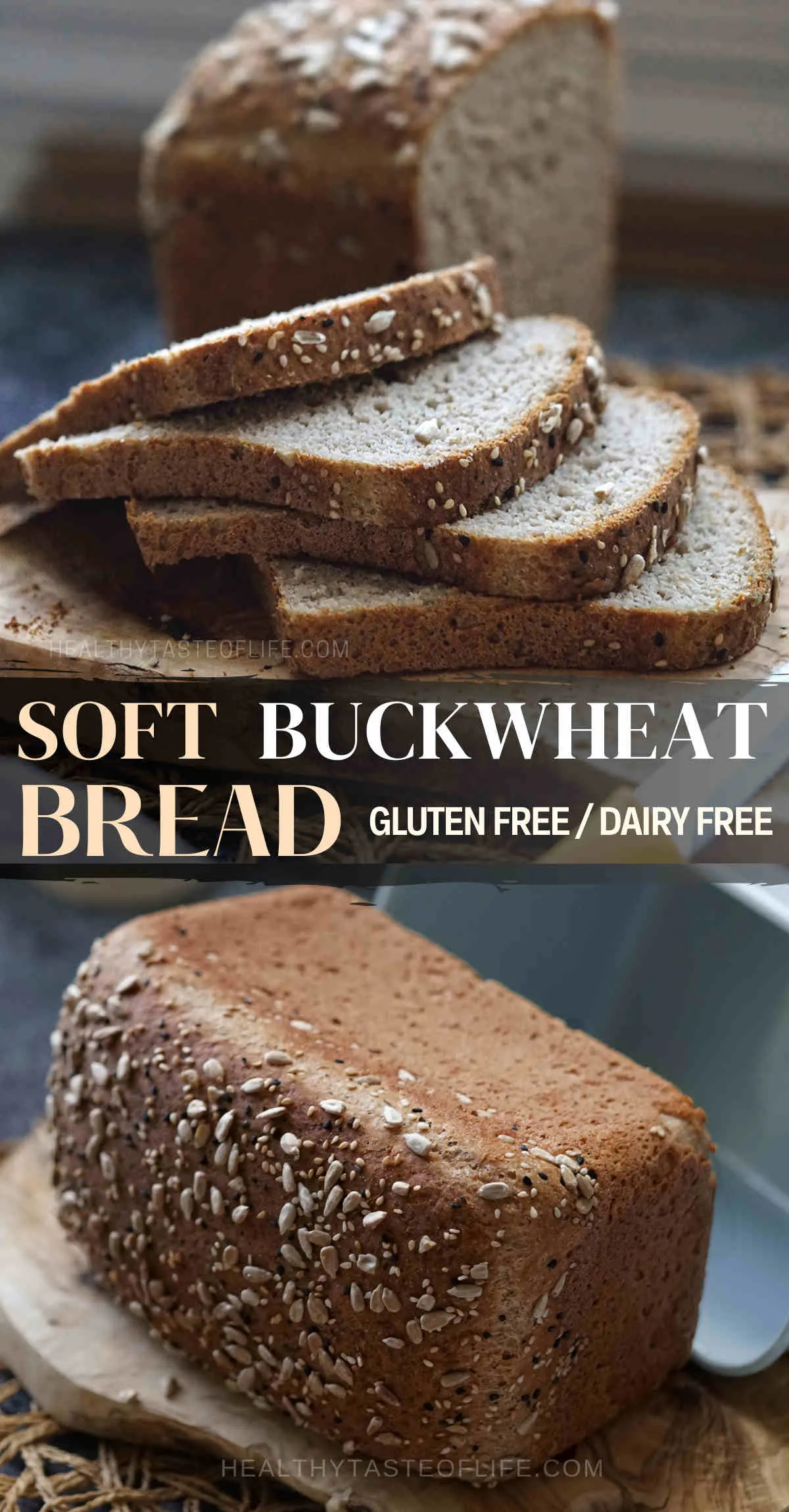
©HealthyTasteOfLife. Content and photographs are copyright protected and need prior permission to use. Copying and/or pasting full recipes to other websites and any social media is strictly prohibited. Sharing and using the link of this recipe is both encouraged and appreciated!


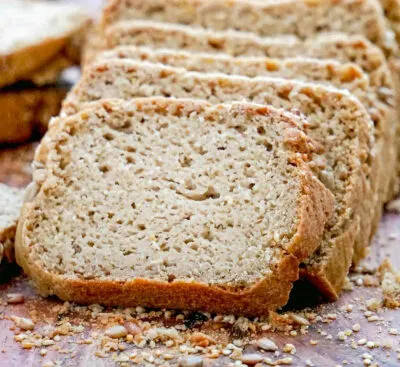
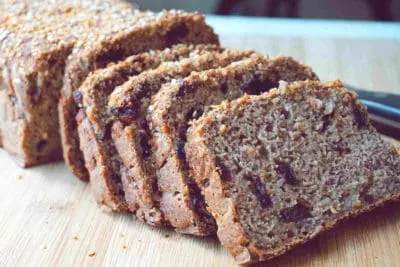
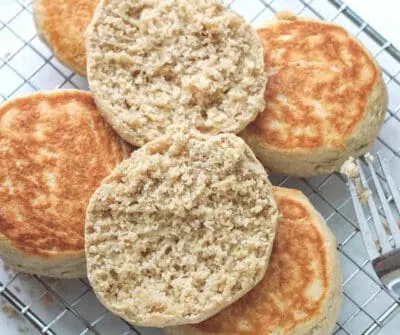
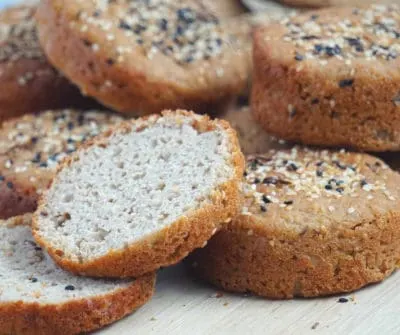
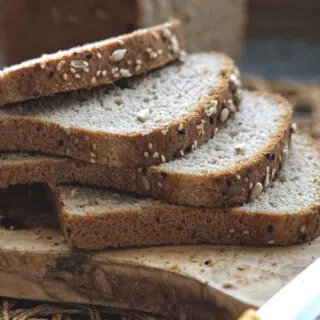
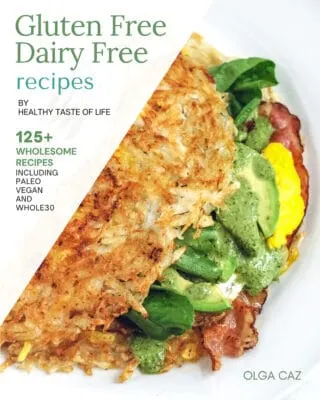
Lizet
Thursday 5th of September 2024
How long does it keep on the counter? That first day the texture was amazing. I was afraid it would spoil and put it in the fridge, but it became hard and crumbly, not great for sandwiches. If I freeze the slices, will the texture change?
HealthyTasteOfLife
Friday 13th of September 2024
Up to 5-6 days I think it should be fine on the counter, just keep it covered so id doesn't dry up. If you freeze it, make sure you pre-slice it, then take one slice at a time and pop it in a toaster to warm it up (or to form a crust) before eating.
Tory
Tuesday 23rd of July 2024
Have you tried this recipe as a sourdough recipe in place of the yeast?
HealthyTasteOfLife
Friday 23rd of August 2024
Nope, I didn't.
John
Sunday 12th of May 2024
Thanks for this fantastic recipe! I used 1 and 3/4 cup buckwheat flour, and 1/4 cup gluten. Perfect texture.
Viv
Friday 26th of January 2024
The bread turned out very good. I did add a little water to moisten the mixture and I forgot to grind the flax seeds but it didn't matter because they softened up when baking.
Kalli
Sunday 10th of September 2023
Can I use a GF flour that has xanthan gum in it? I noticed your mix does not contain any.
HealthyTasteOfLife
Monday 11th of September 2023
I never used xanthan gum in GF baking as I'm sensitive to it, so I can't tell.